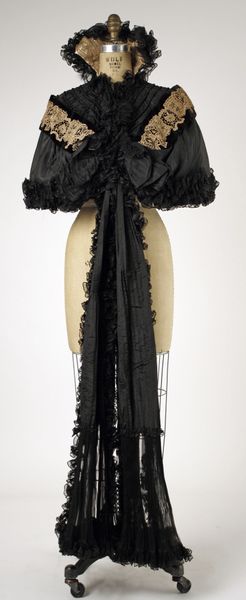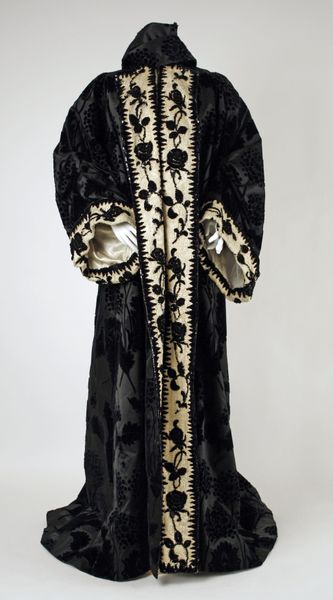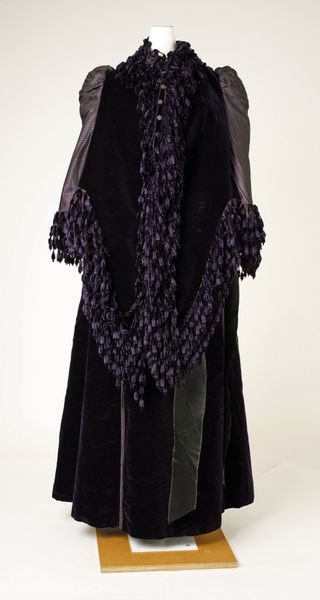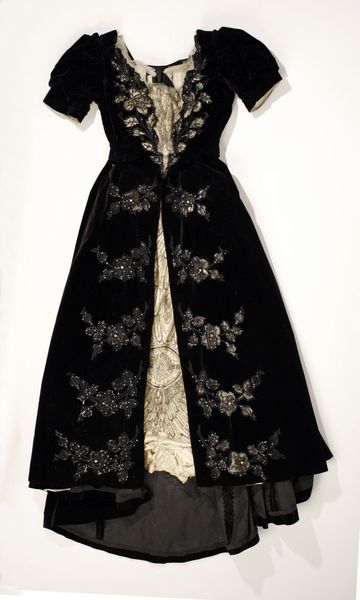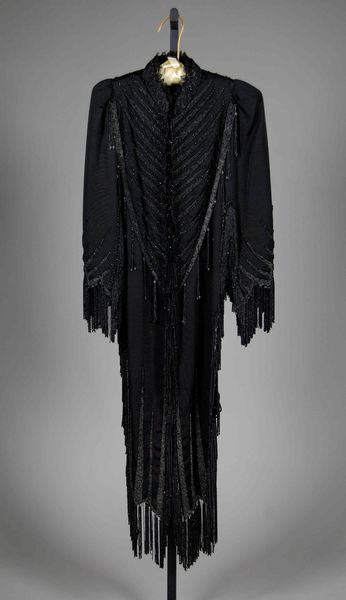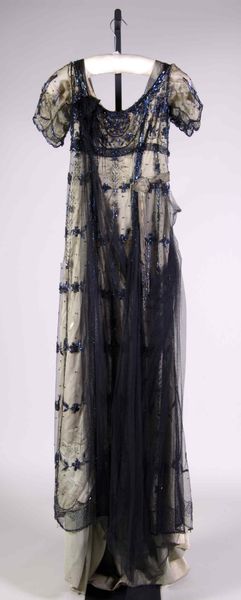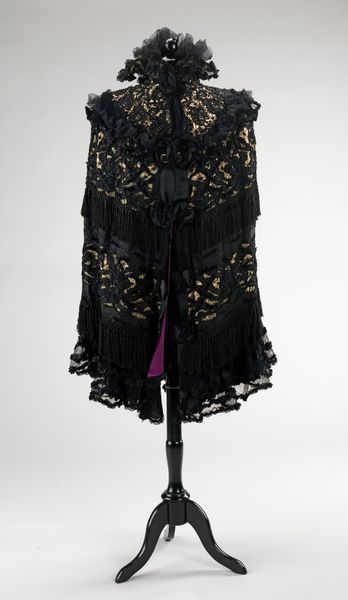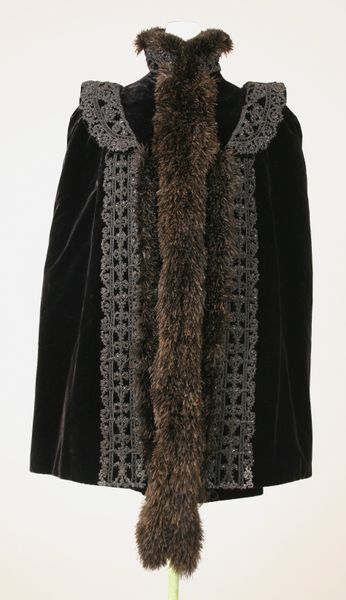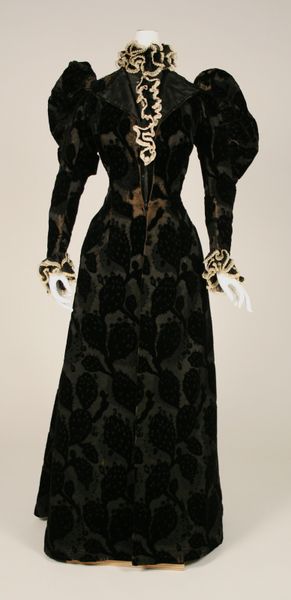
Copyright: Public Domain
Editor: So, this "Coat" from between 1860 and 1896, created by Emile Pingat, utilizes fibre and textile art. Its elaborate, dark lacework makes it look like something out of a Victorian novel, doesn’t it? How do you interpret the cultural significance embedded within such a piece? Curator: The pervasive black and elaborate lacework is a strong symbol. Considering the era, what emotions do you think the color evokes? Beyond the immediate, what could its presence signify in a deeper cultural context? Editor: It certainly makes me think of mourning. It's such a specific and powerful visual signal. Is that the primary reading? Curator: It's difficult to say if mourning is the only intended symbolic gesture here, but in a world where clothing acted as signifier, color and material became critical. Notice the ways in which the heavy fabric of the coat interacts with the far more ephemeral lace, these two contrasting visuals come to symbolize the solidity of grief with the potential freedom in death and faith. Where might the designer had acquired the symbolism of his designs? Editor: Possibly other forms of mourning clothing through history? Like those elaborate Victorian mourning rituals that became theatrical? Curator: Precisely! The theatricalization of grief becomes a social script acted out in visual terms. Pingat may not simply be recording that script, but is engaging in shaping it, isn't it so? Editor: Yes! And it’s intriguing to consider how such a heavy garment becomes part of constructing and performing an identity connected to grief. Thanks, I never considered clothing beyond aesthetic taste! Curator: My pleasure. And this type of thinking demonstrates the power clothes has in reflecting both societal expectation, and private emotion.
Comments
No comments
Be the first to comment and join the conversation on the ultimate creative platform.


